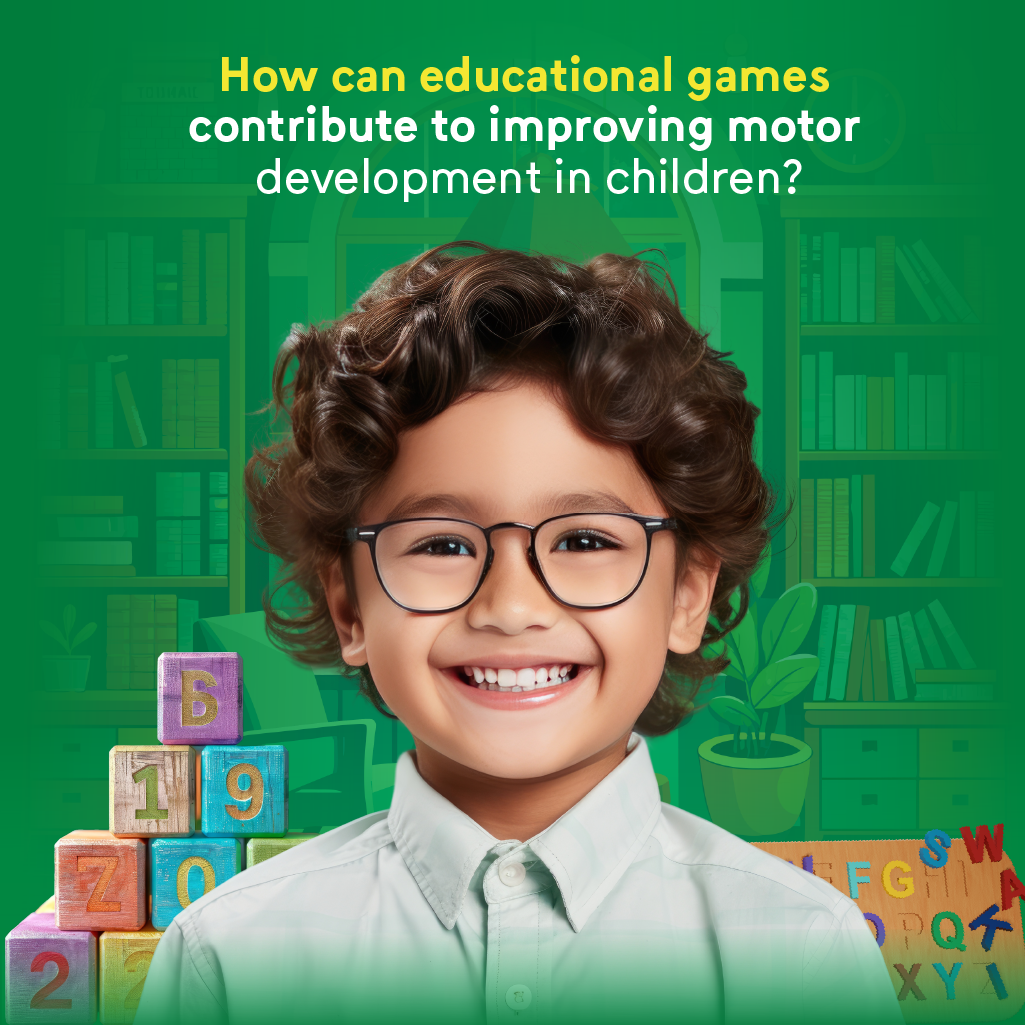
Our children’s lives have become more complicated, especially with the increase in technology and the accelerated life in everything. Indeed, all of this has been accompanied by an increase in children’s use of electronic devices, such as phones, televisions, tablets, computers, and PlayStations, because they and their parents think that this provides them with entertainment, and despite the fact that these devices… Or electronic games can bring a little well-being to children, but they deprive them of the advantages of traditional games and even educational games, which are considered a great way to Improving Motor Skills in Children and even improve mental abilities and develop children’s behavioral skills. Therefore, this provides them with normal growth, but before taking The role of educational games in Improving Motor Skills in Children. It is first necessary to recognize the importance of childhood and the benefits of play at that stage.
The importance of childhood:
Our children are the foundation of the future. Rather, they are the basic building blocks that form society, and according to the way they are raised and educated, the future is shaped. The first years of our children’s lives are considered the basis for forming their personality and highlighting their potential. At this stage, the features of the child’s personality that will appear in the future are drawn. Habits are formed, creative aptitudes and tendencies grow, abilities are formed, and skills begin to appear. Therefore, all developed societies pay attention to children, develop their creative abilities, and provide physical activities and educational games that contribute to developing and Improving Motor Skills in Children.
The role of educational games in Improving Motor Skills in Children:
- Educational games help strengthen the child’s muscles and release excess energy.
- Educational games also help to achieve sensory-motor synergy in the child, which in turn helps the child learn many skills.
- Educational games relieve the child’s body of muscle fatigue and physical tension, Thus Improving Motor Skills in Children.
There are other benefits of motor educational games Improving Motor Skills in Children:
When our children move randomly, such as jumping, jogging, or running, they understand their position according to the outside world, that is, they develop spatial awareness, and this in turn develops their spatial intelligence. This also contributes greatly to achieving balance and moving smoothly, easily, and flexibly, thus Improving Motor Skills in Children.
The benefits of educational games are not limited to Improving Motor Skills in Children only, but they also have many other benefits, which are summarized as follows:
- Educational games train children in critical thinking and memorization.
- Educational games contribute to developing children’s knowledge and experience by stimulating thinking and stimulating memory when using educational games based on logic and thinking.
- Educational games enhance the child’s personality, especially in the pre-school stage.
- Educational games help children improve their communication skills with others verbally and socially, as children cooperate with each other in play and learn how to integrate into a group.
- Educational toys encourage children to explore the environment around them and thus provide children with an opportunity to learn in an interesting and fun way.
- Educational games are an educational method suitable for all learning styles.
- Educational games create an interesting atmosphere within the learning environment.
- The opportunity gives shy children the opportunity to participate, gain experiences and learn.
- Educational games provide children with opportunities to try, experiment, and make mistakes in an appropriate environment without fear of evaluations.
- Educational games transform abstract concepts into concrete experiences, helping children perceive and understand the meanings of things.
- Educational games give children opportunities to move completely freely within the learning environment, and this in turn eliminates educational routines that may cause boredom for children, making the learning environment more enjoyable.
- Educational games provide children with a healthy social upbringing. They teach children to cooperate, communicate with others, give and take, and abandon selfishness.
- Educational games contribute to giving children the concepts of competition and sportsmanship.
- It helps teachers and educators discover children’s abilities, inclinations and talents.
The role of play in general in educating and Improving Motor Skills in Children:
Play is the key to a child’s development, growth and learning. Through play, the child explores and learns about the surrounding environment, and even explores himself and his abilities and learns from those around him. His motor, mental and various cognitive skills that he needs in his life also develop. Through play, the child acquires knowledge, information and experiences that are difficult to achieve. Acquired from school books, play is the first school through which a person learns. Play contributes to developing the child’s social and mental skills, It enhances innovation and creativity, and play contributes to alleviating stress and improving physical health, in addition to Improving Motor Skills in Children.
Other benefits of playing:
- Play enhances communication and cooperation skills and builds relationships between children. It also works to enhance communication and build relationships between individuals. It also provides the child with opportunities to learn and gain experiences in an enjoyable way.
- In addition, it provides opportunities to learn and acquire skills in a fun and inspiring way.
- Educators use play as a therapeutic method to help children solve the problems and disorders they suffer from and modify wrong behaviors.
- Educators resort to it to help them solve some of the problems and disorders that some children suffer from.
But what are educational games?
Educational games can be defined as an educational method and an important mediator that works to Improving Motor Skills in Children, in addition to other skills such as cognitive and social skills. They are also an important tool for satisfying the child’s needs, as they provide him with a rich environment that helps his development, stimulates his curiosity and encourages him to explore.
Educational games can be defined as an activity and teaching and learning strategy based on directed play based on directed play that the child performs alone or with other children within a group within the framework of a set of studied principles that control the flow of play and at the same time do not reduce the freedom of children.
Educational games can also be defined as a type of activity governed by a set of principles, rules and laws that organize and control the flow of play under the supervision of a teacher or educator, in which children participate to reach a previously determined educational goal. The educational game ends with a winner and a non-winner, and winning here depends on skills or skills. Luck or both.
However, educational games must meet several conditions and educational standards in order to achieve the desired goals and help Improving Motor Skills in Children. What are these standards?
Educational standards that must be met in educational games:
- Simplicity of educational games, which means that the colors of the tools used in the game do not overshadow the main ideas of the educational game or the goals to be achieved.
- Educational gaming tools should be appropriate for the child’s age and physical, mental, social, motor and emotional maturity.
- Educational games must have an element of safety and security.
- The size and shape of the tools used in educational games should be appropriate to the child’s growth.
- The tools used in educational games should be multi-use and address many ideas, so that this stimulates the child’s motivation for exploration, independence, and play, and then unleashes his imagination, ideas, and creativity.
- Educational games must be compatible with the desired educational goals and work to achieve them to the fullest extent.
- Educational toys must be attractive and interesting, attract the child aesthetically, and arouse his interest, curiosity, and eagerness to play with them.
- Educational games must suit the cultural level and traditions of the environment in which the child lives.
- Educational games should be of diverse use, used for more than one purpose and in more than one way, and appropriate to the individual differences of children.
- Educational games contribute to the development and coordination of children’s muscles.
- Educational games help children develop key skills.
- Educational games develop independence and self-reliance in children.
- Educational games allow children to participate and interact socially while at the same time giving them the opportunity for individual practice.
- It must be available to the child in a safe place that is easy for him to obtain, and it must be available to all children.
- Ensure that educational toys are completely free of small parts that can be swallowed, and that the tools are safe.
- Educational toys must be strong and durable for longer periods, especially in kindergartens, where many children use them.
Components of educational games that contribute to Improving Motor Skills in Children:
Motor educational games consist of several elements as follows:
- Educational objectives to be achieved: These objectives are linked to the subject of the lesson and its main ideas or motor skills to be achieved.
- Players: They are chosen according to the resistance of that game action to them.
- The principles, laws, and steps of the educational game: These are thoughtful principles set by the teacher or educator and taught to children.
- Time element: This is the specific time for the educational game.
- Place element: It is the environment in which children play the motor educational game.
- Competitive activity: This is represented by the movement of competing children during the motor educational game.
- The result: represents the conclusion of the kinetic educational game.
What goals do kinetic educational games seek to achieve?
- Educational games must serve as an exploration tool: Educational games should help children explore the world and people around them, and then gain experiences and knowledge.
- Educational games develop cognitive aspects: Educational games must help children formulate, think, and concentrate by understanding, memorizing, and applying the rules of educational games.
- Educational games contribute to Improving Motor Skills in Children, in addition to improving the social and emotional aspects, in addition to Children’s Physical Development.
- Educational games should serve as a compensation tool: that is, they should be a way to relieve pressure and tension in the surrounding environment, by making educational games an interesting and attractive alternative to books and the exhausting school routine.
Types of educational games:
- Educational games designed to help children learn. Among the most common are educational letter and number cards, which require arrangement, for example, or the formation of sentences or words, and also cubes with letters and numbers written on them.
- Educational games in the form of imaginative games, imaginative activities and plays, such as children playing different roles.
- Motor educational games represented in various physical activities, such as matches based on competition between children, and based on principles and rules agreed upon by the children together, in which the winner and loser are determined.
Examples of motor educational games that contribute to Improving Motor Skills in Children:
Do you remember, dear educator, how we used to entertain ourselves by running and jumping? Do you remember running in the parks? Do you remember your feelings at that time and our hearts that were beating with joy and enjoyment in those movement games? We did not realize at the time that these movements were beneficial to our learning, the growth of our minds, and our physical and motor development, as movement had a prominent effect in Improving Motor Skills in Children, and in fact, Children actually begin to move while they are still in their mothers’ bellies through the movements they make back and forth inside the mother’s womb, so never deprive your children of movement. These movements can be controlled and studied and have benefit if they are applied through motor educational games, so here you go. Many examples of motor educational games.
Educational Movement Games that can be done at home:
We often wonder, how can we make room for our children to play useful motor games at home? Of course, we cannot deny that the safety of our children always comes first, and this means providing a safe environment for the child inside the home to practice motor games, and this will only be achieved by providing a place free of Furniture so that it does not hinder the child’s movement, while using safety devices for the child, such as plastic protectors that are installed on the edges of tables and other home furniture. Now here are some examples of movement games that can be played at home, for example:
- Light scarves can be used for throwing and catching the ball.
- It is also possible to install ropes in the place designated for playing to serve as a swing, but with a foam mattress placed under the swing to provide a safety and security factor.
- A basketball stand can also be installed so that the child can practice throwing skills.
- Inflatable swimming pools can also be used for children to enjoy in the summer.
But all movement games should not be limited only to the home. Always try to spend time outing with your children outside the home, by going to parks, running, and jumping rope.
Motor educational games that children can implement at school contribute to Improving Motor Skills in Children:
When children jump or dance, they use their bodies to explore movements and develop body awareness of their position. Movement games therefore develop the foundations and skills needed to enhance learning in children. Therefore, when this is implemented through school, it will have a beneficial effect on their abilities to concentrate, pay attention, and learn in school. interesting environment,
Here are examples of Educational Movement Games that four-year-olds can perform:
Children jumping for fifteen minutes using the sports equipment designated for jumping is enough to release excess energy in children, and stimulate their body and mind. Also, children’s use of the words up, down, low, and high while playing can help them relate to where they are in the surrounding environment, and thus their awareness of how the relationship The things.
Kinetic educational games to teach children numbers: It is a game in which children jump on the numbers that have been written with chalk on the floor, noting that the children are urged to mention the number that they jump over.
Children use colored balls to throw them into the basket, and the children remember the color of the ball when throwing it into the basket, so that they have concepts and experiences and learn the names of colors with movement, with the children dividing into groups, and knowing the winning team.
Children playing bowling teaches them order and counting, by arranging the bottles and counting the bottles that the children dropped to find out the winners.
Children play a game of skipping rope, and the one who continues to jump higher than the rest of the children the number of times wins.
How does Elmadrasah.com contribute to supporting learning through play and the use of educational games?
The children of that era are children who grew up on competition, incentives, and programming. Indeed, their motto in life became obtaining knowledge through fun and play, and here comes the role of Elmadrasah.com, as Elmadrasah.com provides digital educational content that suits their interests, as the lessons on Elmadrasah.com is characterized by flexibility, fun, and the use of various educational games in order to deliver information to children in a simple, fun, and interesting manner. The teachers of Elmadrasah.com use many educational methods, games, and various interactive activities in order to create a distinct and enjoyable educational atmosphere that children never tire of.
Elmadrasah.com also offers various educational materials, such as educational videos, articles, interactive exercises, and virtual simulations, which cover all academic fields, as students can use and access them easily.
How can the educator make Educational Movement Games more enjoyable and contribute to Improving Motor Skills in Children?
- The teacher or educator should create fun and safe movement games that should suit Children’s Physical Development.
- Providing the necessary and appropriate tools for motor games.
- Make sure to explain the idea of the motor game to children and simplify it for them.
- Encouraging all children to participate in motor games to motivate them to cooperate and play together.
- The teacher should use motivating words for the children, not use comparison methods between them, and monitor them for their safety.
- Using diversification in kinetic educational games and adding songs and stories to them to add an element of fun, suspense and fun.
- The time for motor games should be consistent with the psychological preparations of children.
Is there a difference between random play and educational games?
Yes, of course. There are many differences between educational games and traditional play, which are as follows:
First: Traditional random play has no rules and regulations, but educational games have clear and specific rules, steps, and laws.
Second: Traditional play is always for entertainment and fun, while educational games depend mainly on achieving planned goals, skills, and abilities.
Third: Traditional play does not have specific goals, while educational games have clear and specific behavioral goals.
Conclusion about educational games:
At the conclusion of this article, we can say that play, when clear controls, steps, and goals are set for it, does not become merely amusement, entertainment, or fun only, but rather goes beyond that to have a significant impact on the educational process, Improving Motor Skills in Children, and developing their various skills.















